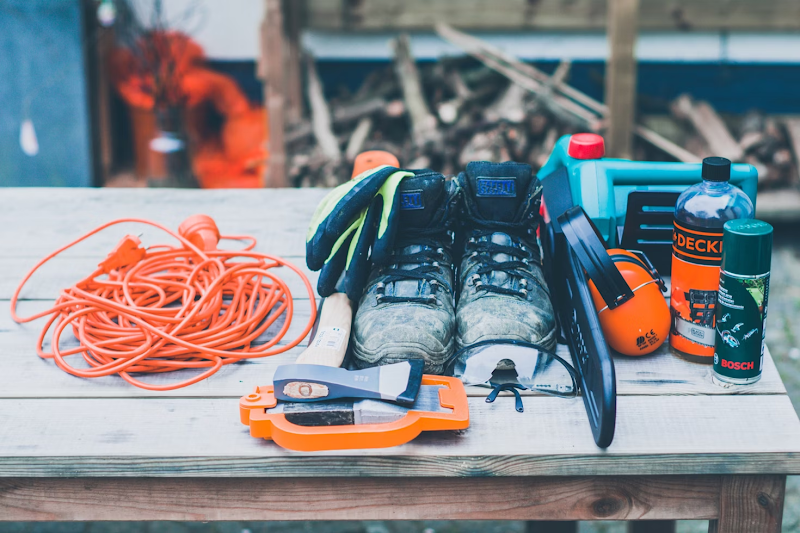Is your extension cord really safe for outdoor use?
When setting up for events, extension cords are often needed to bridge the gap between distant power sources and outdoor workstations, making it essential to account for every potential hazard. Safety is a top priority when relocating tools or lights to outdoor areas.
Careful considerations when choosing an extension cord can make all the difference. Unlike indoor cords, outdoor extension cords must withstand rain, extreme temperatures, and rough surfaces.
Not having weather-resistant insulation, non-overheating plugs, or grounded plugs can lead to equipment damage, overheating, electrical shock, or, worse, fire. Beyond that, proper wire gauge selection and certification marks streamline meeting power requirements with safety exercises.
Best of all, ruggedness with visibility actively lowers accidents designed to damage the cord. Every element combines together to reinforce the provided safety and performance.
Continue reading to learn what elements endure high outdoor reliability standards.
1. Weather-Resistant Insulation
When selecting extension cords for outdoor use, ensure that they can handle the weather elements. Cords designed for outdoor conditions feature weather-resistant insulation made from durable materials like rubber, vinyl, or thermoplastic elastomer (TPE).
These materials are designed to withstand rain, snow, and extreme temperature bursts without damaging the cord. This type of insulation, which protects the inner wiring, also keeps the cord pliable so that it does not snap or become fragile due to the freezing weather.
Such a weatherproof cord will operate dependably in the intense summer heat and freezing winter temperatures. Remember that external elements can increase wear and tear on most cords, but with the proper insulation, the right cord can remain durable and provide safe power when necessary.
2. Grounded Three-Prong Plugs
Safety is paramount when using extension cords outdoors, and a grounded three-prong plug is one of the most critical features for preventing electrical shock. These plugs prevent cords from holding excess electricity due to their additional grounding pin.
Without these plugs, the risk of electric shock greatly increases. A feature like this prevents exposed plug parts from sustaining damage in wet environments. This further aids in the stabilization of the supplied power, which decreases the risk of equipment damage.
When you decide to make use of an outdoor extension cord with a three-prong plug, you are ensuring that it is rated for conditions of water exposure and volatile weather that can increase electrical hazards. Therefore, investing in a cord with a grounded plug is a quick and worthwhile step towards safeguarding your gadgets and yourself.
3. Appropriate Wire Gauge and Amperage Rating
Selecting the appropriate wire gauge is crucial in ensuring that your outdoor extension cord can handle the power requirements of your devices.
The power demand of a wire is indicated by the American Wire Gauge (AWG) number, which determines the width of the wire’s internal cord. The lower the gauge number, the thicker the wire and the higher its current-carrying capacity.
For instance, a 12 AWG chord will outperform a 16 AWG chord in terms of versatility since it can be used with powered equipment such as power tools or outdoor heaters. On the other hand, lighter tasks, such as powering small lights or fans, may be well-suited for a 14 or 16 AWG chord.
Ultimately, being aware of the required wire gauge suited for your needs will definitely avoid overheating and will make sure that the cord will withstand the electric load safely. This is why the amperage rating and wire gauge must always be checked, as a match is required for optimal safety and apparatus performance.
4. Certification Marks
Compliance marks on outdoor extension cords ensure the consumers’ safety and quality. These marks are issued by well-known organizations such as Underwriters Laboratories (UL) or Intertek (ETL).
This means that the cord has undergone rigorous testing, such as electrical work, weatherproofing, and structural resilience. It is safe to say that a cord with UL or ETL certification guarantees a safe outdoor use mount, which can significantly minimize electrical complication risks.
Additionally, it is important to note that without certification, a cord might not fulfill legal safety requirements, which can put you at risk. This is why it is important to check for certification marks when purchasing outdoor extension cords: to be certain that the product is safe and dependable.
5. Visibility and Durability
Visibility is often overlooked but is a critical feature of an extension cord designed for the outdoors. Many outdoor cords available in the market are made in bright colors like yellow or orange, making them stand out in low-light situations and when covered by clutter or foliage.
This improvement in visibility can help prevent tripping or damaging the cord while using it in outdoor settings. Along with visibility, these cords are also made for long-term durability.
They are made to withstand physical wear, the sun’s ultraviolet rays, and rough outdoor surfaces. This enables them to last longer, even when elements are more exposed. Consequently, this combination helps you ensure the cord can function safely for a long time and provide much-needed convenience during outdoor activities.
Conclusion
Selecting the right extension cord for outdoor use isn’t just a matter of convenience—it’s a critical safety decision.
From weather-resistant insulation and grounded three-prong plugs to proper wire gauges, certification marks, and high visibility, each component plays a vital role in safeguarding you, your tools, and your events.
Investing in a rugged, certified cord ensures reliable performance, even in the harshest conditions. Don’t risk your safety or equipment with indoor cords—outdoor-rated options are built to withstand it all.
Stay safe, stay powered, and let your outdoor setup shine without worry!

